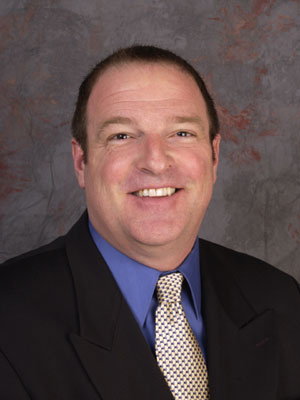

Become A Hero To LB Animals With A $15 Membership. Learn About Us, Click Here.

Saving Lives Thru Spay/Neuter & Education





3853 Atlantic Ave.
|
Click here |
LB's First Responders -- Police & Fire -- Respond re LNG
(May 28, 2005) -- LBReport.com posts below extended portions of testimony and a report from LB's first responders -- LBPD and LBFD -- presented at a LB City Council Committee meeting related to Liquefied Natural Gas (LNG)...an issue raised by a proposal to locate an 80+ million gallon LNG facility in the Port of LB, roughly two miles from downtown LB.
On April 22, LBFD Chief Dave Ellis and LBPD Deputy Chief Tim Jackman testified at a meeting of LB's Federal Legislation & Environmental Affairs Committee (chair: Councilman Frank Colonna; vice chair: Vice Mayor Jackie Kell; member: Councilwoman Tonia Chief Ellis and Deputy Chief Jackman reported on an April 11-12 trip (with LBFD Battalion Chief Steve Lewis) to Boston, made at the direction of City Manager Jerry Miller to gather information about operations related to an LNG facility in Boston harbor (Everett, MA).
City Manager Miller told the Committee that he read their report "with some interest and some degree of concern and felt that you should have the ability to see this as well."
The report, from LBPD Chief Batts and LBFD Chief Ellis, is dated April 20 and marked "draft." City Manager Miller noted that although staff typically reviews and vets materials at greater length before release, due to the immediacy of the LNG issue (federal LNG legislation advancing) and a scheduled legislative advocacy trip to Washington, D.C. by the Committee members (slated to begin April 24), staff sought to expedite the report.
Councilman/Committee chair Colonna promptly convened a meeting of the Committee on April 22 at which the materials and testimony were made available to the Committee and the public.
We post salient portions, including statements by Committee members, below. We remind readers that for the reasons cited by City Manager Miller, staff released the written materials marked in "draft" form. The transcript below is unofficial, prepared by us.
City Manager Jerry Miller:...I think that the discussion related to the Police and Fire Dept. trip to Boston would help to inform your Committee on your discussion related to our approaches on LNG and FERC [Federal Energy Regulatory Commission] jurisdiction as they reach the Senate. So with your permission, I'd like to give you some background on why we sent the Police and Fire Dept. back to Boston and then have them report to you on their findings.
Basically about a month or so ago, I decided to send Police and Fire to the Boston area to gather information about the LNG plant in Everett, principally because I felt it was important for us to gather information about the security, operational, navigational and cost issues related to that LNG plant, and in particular movement of the vessels, which seem to have a similar set of circumstances as we might find here in the Long Beach area.
And so we did that. The goal basically was to help the City Manager in formulating ultimately a letter to the Harbor Dept. to be submitted as information as part of the Environmental Impact Report for the proposed LNG plant...
I would not have planned to bring this to you at this point in time because, again, we were going to have a chance to review the draft report from the trip and we would typically vet that through the Police and Fire Chief and spend a little more time talking about the findings in the document before it would come to you and the community. But we felt that given the immediacy of this issue, and the timing of your trip, that we would try to expedite that report...
All pages marked "Draft"
Date: April 20, 2005
...This report is not intended to replace or predict the results of an environmental impact report. The Port has not yet been involved in discussions with the trip participants since their return...
The following summarizes the findings of the visit to Boston regarding the security and safety procedures for LNG vessels entering the Port of Boston. [excerpted below]
...Entrance to Harbor
...
Boston Harbor
Tobin (Mystic River) Bridge
LNG Terminal (DistriGas)
Risk Management
Recent research (Sandia Labs, December 2004) indicates the greatest danger from LNG exists from a "pool" fire. A pool fire is most likely to occur from a shipboard incident, whether or not caused by accident or intentionally.
A pool fire of LNG is similar in thermal characteristics as any other pooled petrochemical. The flame front may be as high as 250-300 feet. Potential for significant burns may exist as far as one mile from the flame front...Any incident that would puncture a hull would likely ignite the spill. In the event a spill does not ignite as a result of the force that caused the rupture, it is probable that any of the thousands of ignition sources will light the vapor cloud when it reaches land.
Land based facilities are dramatically less problematic. , The tanks are constructed within earthen berms designed to hold 110% of total tank capacity. Further, the tanks are pumped from the top, eliminating the possibility of a gravity fed breach...
DistiGas purchased two tugboats for use by the Boston Fire Department (FD) in the event of a fire. Both boats are equipped with monitors to spray water on a fire. According to Boston FD, a fireboat is useless in extinguishing a pool fire since the fireboat can only shoot water 200 feet. The closest approach to a pool fire is 1000 feet for a properly equipped vessel. These tugboats are operated by a tugboat company and do not have trained fire fighting personnel on board. (A side note, Boston FD has a fireboat that is not in continuous service. When it is not in the yard being repaired, it is staffed by sending an engine company to operate the boat.)
A key issue for policy makers is that Boston's LNG facility has been in place for 30 years. A modern environmental impact report has never been completed.
Cryogenic issues have not been fully examined in any study. LNG is held at a temperature of -256 degrees F. The result of a breach, leak or other exposure to cryogenic material can be significant.
Much has been made of the fact that there has never been a significant LNG incident at sea. The real issue is that the probability of an incident is greater than zero -- meaning that instead of minimizing the likelihood of an event, attention should be directed towards the consequences of an eventual incident and ways to mitigate those consequences.
...
LBFD Chief Ellis: ...We had the opportunity to meet with high ranking staff in the Boston Fire Dept., Boston Police Dept., the U.S. Coast Guard, the State Police, and a safety officer at the DistriGas LNG facility...
Our goal was to see firsthand what is needed by city resources to ensure public in the event of any type of event related to the shipping, off loading, and storage of LNG in the Boston region.
It was very clear during our visit to Boston that the most important stakeholder is the community. This is also true of Long Beach.
The city resources required to mitigate any potential emergency will heavily impact the staffing in the Fire Department, the Police Department and other city departments. This leads to a major fiscal impact.
And post 9/11, the increase in security concerns only makes that impact greater from a financial and a resource standpoint...
LBPD Deputy Chief Tim Jackman: ...I think it's key to understand that when you talk about risk assessment, you're talking about the probability of an incident occurring. And unless the probability of an incident occurring is zero, then there is some likelihood somewhere that something could happen.
And that something that could happen is what they "the hazard" or the consequences of an incident occurring...When I use the term "incident," I'm talking about anything from an accident to an intentional act, anything from a fire to a spill to a cryogenic accident. Those things all could potentially happen.
Any time, obviously, you have human beings involved, you have machinery involved, you have the ocean involved, there is a probability of an error being made or a mistake happening or an accident occurring.
And so based on that,...it's important to understand that it's not a question of "if" something will happen; it simply is a question of "when" when you're talking probability.
....[Police units] in the remainder of the city are responsible to respond to any calls that may occur while those other officers are on detail safeguarding...particular land points. Obviously, that creates a problem with the police response times and is of significant concern to the Boston Police Dept...
...[Discusses some potential impacts in Long Beach based on what was learned in Boston; notes that LBFD and LBPD hadn't yet spoken with Port because of short time since return.]
...Ships coming into Long Beach will likely be taken care of similarly to the way they are in Boston. They'll be stopped offshore where the Coast Guard will conduct a security and safety check and at that point the vessel will be allowed to proceed.
It will then come [uses map to show seaward entry point to LB harbor] this is called Queens Gate, there's a hole in the breakwater...it would probably follow a path through the Queens Gate and then directly to [Pier T near eastern end of Port]...
[Shows items roughly within a mile of Pier T site]...You can see that Sea Launch is well within a mile. [Points to other nearby area] This is also a military fueling facility where gasoline tankers come in, I believe it's jet fuel for the military...
[Shows closer-in photo with facilities near proposed LNG site]...This is an existing gasoline terminal, I believe British Petroleum is here now...they offload their crude here for their refinery. This is the Gerald Desmond Bridge [a bit further]...
Now when we look at Long Beach and try and determine what exactly may occur, some initial thoughts that I have on this, is as the [entry] channel goes right by here, it is well within the fire zone. And again using the distance of a mile...the ship would transit very close to shore here [indicates Port channel area].
Unlike Boston, we're not going to have to go under a bridge. We're not going to a couple of hundred yards of condominiums, but there is significant infrastructure located on the shore [Port area] here.
The other thing that concerns me to some degree, and again it'll take someone to do a proper EIR to determine this, is that if a [LNG] ship were to have an incident out in this area [indicates seaward, on approach to LB harbor] were to become a derelict, were to catch fire, it would be drifting uncontrollably. There's no way to approach a fire of that intensity with anything that is known to man at this point.
With the prevailing winds in a drift of a derelict, it would eventually push up on shore, obviously over here [indicates areas roughly toward Bluff beach areas, very approximate] but it's along the Long Beach shore.
It exists within the realm of probability. It means it could happen. It doesn't mean it's likely to. I can't answer that. Somebody who's got a lot better math skills than me will have to address that. I do know however the probability of an incident occurring is greater than zero and that concerns me, because I have to look at how do I mitigate the impact if something does happen. That's what the Fire Chief has to do, is mitigate if something does happen.
And so those are some of the issues that concern me on the hazard side.
On the security side...in addition to the law enforcement agencies I mentioned before, the Everett Police Department has to put five people on 24 hours a day within the DistriGas [LNG] facility. The State Police has to maintain a 24 hour presence in the Mystic River, maintaining a 500 foot security zone.
The only costs that are reimbursed out of all that is $12,000 is paid for the State of Massachusetts to reimburse the State Police for overtime costs. But that doesn't take into account capital acquisition and capital replacement costs for vessels, helicopters. It doesn't into effect operating costs for that equipment.
It's expensive the amount of resources that are being spent on this and there's been no discovery, which is why during Chief Ellis' presentation he stated that one of the most important issues for us to look at is to be able to ensure whoever comes in here, if they come in here, come up with some way to mitigate costs that we as a local entity are likely to face.
And we aren't going to have the support of a number of different communities here. This is a Long Beach problem and we'll face the consequences thereof.
[Chair Colonna indicates he has several questions but as a courtesy first defers to colleagues]
Vice Mayor Kell: OK, these prevailing winds that you talked about. They would go how far into the City of Long Beach itself?
LBPD Deputy Chief Jackman: I don't think the winds are the problem. It would be the fact that the winds would push the vessel and any potential pool fire towards the shore, and again wherever the edge of the pool is, the flame heights may be as high as 600 feet depending on if the pool is big enough, that can burn [people and property] a mile away.
And I'm not a fire expert, Chief [Ellis], you might want to address that.
LBFD Chief Ellis:: ...I think it goes back to...the importance of having a scientific research done that actually provides the information from a scientific standpoint...site specific to Long Beach...
Councilwoman Kell: But I think you could probably tell me how far, when you talk about if there were to a fire that went into Long Beach, tell me where is the mile from that point? Where down here is the mile? Is it at City Hall?...
LBPD Deputy Chief Jackman: ...Just projecting from the shore...roughly 10th St. to Anaheim is probably a mile if you were go inland. That might be a bit far, it could even be 7th St is a mile...probably somewhere between 7th and Anaheim I'd guess is a mile.
Councilman/chair Colonna: I'd like to just add the potential of other incendiary actions that could occur...[W]e're presuming if an incident were to occur that it would confined in and of itself, but we do have other cargo that's petroleum product, direct driven, that could significantly leapfrog and create a chain reaction that could keep moving...from the southwest, which is the wind usually, the current brings it more to shoreline, more moving towards the Bluff, Belmont Shore peninsula areas.
But my concern...is this [is] not just a single vessel out there. There are other vessels that I believe carry bulk petroleum products that we certainly, I don't think we'd be eliminating them constantly if a [LNG] ship like this would be coming in...
...It would seem to me when you indicated that if there were an explosion or whatever would ignite or create the problem, that there is no operation known to man, meaning you guys or our fire people, that could deal with anything other than the perimeter. It would seem to me that it would be a run for your life type of incident.
Deputy Chief Jackman: Yes sir...I've learned a great deal [about LNG] and one of the issues out there is that it's unlikely in an incident where a tank has ruptured that you're going to have an explosion...It's actually a slow igniting, depending on that 5-15% [concentration], where it occurs in the pool, where it's gassified. But it generally won't explode unless it's in a confined space like gas in your house. If you turn the gas on and don't light it, eventually it may blow up because it's contained. Generally speaking in a shipboard accident, it's probably not going to be contained, it's going to flow and therefore ignite slowly.
It's going to be a bad thing no matter what, but it's not going to be an explosion...As I understand it, it ignites slowly and it travels back toward the source...and of course as it warms it and vaporizes it as it goes back, it's actually traveling back towards the source...
LBFD Chief Ellis: ....In essence what he said seems to be somewhat accurate, but I want to point to a [1944] incident that took place in Cleveland, Ohio. We can speak about...how [LNG] burns back slowly to its source, but in that case the liquid and the gases were in confined spaces, they were homes, basements and sewer lines and close to 130 people died. So yes in those atmospheres...[in those conditions] there was an explosion that took place. So again, statistically there are possibilities for things like that to happen even though from a scientific standpoint, in a controlled environment, you might not think that it would...
...Really, one of the main things we have to do is be concerned about the exposures from the [LNG] site itself and for the tankers. And as the tanker travels you'll have exposures both for pleasure craft, you'll have other tankers, you'll have containers...and also you mentioned the fuel tankers...
Councilwoman City Manager Jerry Miller:...We just felt that the information was relevant to you. I was given a draft of the report earlier this week. I read it with some interest and some degree of concern and felt that you should have the ability to see this as well.
In addition, some of the information that we are talking about today is information...that should probably be discussed as this legislation [federal Energy bill] moves into the Senate, because there are questions which must be addressed in our mind before we would ever want to move forward on a project like this...
Councilwoman ...There's a lot of "what ifs" and a lot of negative aspects to this that I think people are trying to sort out at this time. One thing that was interesting in the trip that I took, I was only there one day, I didn't get to get in depth...probably the most informative aspect of the trip was the discussion with the Coast Guard. And one thing that they did say was never before, I guess there's a silver lining on everything, is that never before in Boston had there been this level of coordination with all the public safety entities...maybe it was the result of 9/11, but that even before 9/11 that the police, the fire, the Coast Guard, the state police, at every level that there is a practice run, so to speak, whenever the [LNG] tanker comes in and that there is a level of coordination that's unprecedented...
What I did see when I was there, I was standing in the main control room of the LNG facility, I looked out across to my left and there were the LNG tankers, and I looked off to my right and there were some newly built condos...they were requesting a pretty penny for some of those and we saw barbecue pits and people's plants and it was amazing to me the proximity...
[B]oston is impacted totally by [the LNG tanker deliveries]. It is a big event, so to speak, once a week in the city. It goes right through the city. And I guess my concern is...a lot of things in your report here don't relate directly to what, because it's going to come through our city. It will be at the edge, granted it'll be here at the city, and we'll still have to deal with a lot of the issues that occur when we have something, an event of this magnitude.
But we're comparing apples and oranges in many instances, so I would like to see somewhere down the road that we look at oranges and oranges, and we say OK these are the elements that we can compare from Boston or another area that has an LNG facility and this is what we're looking at in Long Beach as a comparable kind of issue or problem or situation and this is how we can get some estimates in terms of risk management, some costs for that risk management and mitigation.
But as I went through Boston...there were very few areas that I could see a comparison with Long Beach, because you're going so right through, I mean, it's not going to go right by our airport where you can wave; we don't have a financial district; there's no condos that you can see, and we're not going under a bridge are we in Long Beach, no?
LBPD Deputy Chief Jackman: ...We don't go under a bridge and we certainly don't come close to these condos...is we have an anchorage. And an anchorage has to be traversed here. It's not traversed in Boston. So we don't have the same problem, we have a different problem...
Councilwoman But again, going to Boston, I'm seeing people, I mean, the person was out there watering their plant looking at an LNG tank, maybe it's just because it's been there so long that they're used to living with it, I don't know.
But the level of hysteria, and I'll call it hysteria because to a certain extent we don't have the facts in order to see if it's real hysteria or if any of that's justified but, you know, the "what ifs" of the world, I mean, there's a lot of things "what if, what if, what if," but I would like to see a little bit more comparison to real life scenarios here in the City of Long Beach and maybe that's what's going to happen with the EIR...
...[O]n my trip to Boston, and we were having lunch with someone from the Museum, they have a Children's Museum, I think it's a Children's Museum on the wharf or whatever and they were concerned because they said their biggest problem there, the biggest problem they had wasn't with people thinking it was going to explode, or closing down the bridge for six minutes, the biggest problem at that time...was the tankers running into, I can't remember if it's whales or dolphins...and that this was a particular issue when it comes to that area [because of Boston harbor's layout]...
Vice Mayor Kell: ...You talked about the costs, the Boston police, the State police, the equipment...and who pays or funds these costs. The federal government? The state government? Who?
Deputy Chief Jackman: Right now nobody is funding the cost except for that $12,000 to the State police in Massachusetts and that's paid by the [LNG] terminal operator DistriGas.
Vice Mayor Kell:...The biggest problem I see for us is the fact that this facility would be close to downtown, and our new Pike @ Rainbow Harbor, and our new 4,000 residential units that have been built. It's not like the condos [in Boston] but nevertheless we hear a lot of fear, fearful statements about [paraphrasing others] "it would not only ruin our port but it would ruin our downtown, our tourist trade," one of the big things that this city relies on for income.
So in the study where they've had other facilities, how close are their downtowns, or their residential units, to some of these more modern facilities [LNG terminals constructed after the Boston area facility]? I think we have to look at this fairly.
And then also in these other places, of these new facilities, how were their costs handled? I think I'd like to know all three things: How are the costs handled in other ways? What are the new safeguards at the new facilities? And how close are they to large projects and residential units?
City Manager Miller: I just simply wanted to explain, again, I had the ability to look at a draft report this week that we really haven't carefully vetted, and we probably ordinarily would have done a little bit more staff work to develop the premises of the report...And my goal was to give you sort of a virtual tour of the Boston Harbor versus the Long Beach Harbor, so any imprecision or indiscretion in that regard is totally mine. I simply wanted to give you folks as much as I could give you on a short-notice basis.
Again our fundamental goal here is to look at security planning, security operations and costs. And those are things that I want to be able to address in the environmental impact report. And I think the [LBPD/LBFD] report itself is very clear that we see that there are great differences between Long Beach and Boston, but nonetheless there are concerns. And so I am only attempting to share those concerns with you and hopefully this will inform you and the entire Council.
Councilman/chair Colonna: ...It would appear to me if would be important for us to find out the information on the various other locations that were sited on LNG and when they were done. Our Council made a commitment to continue with a seamless development of the downtown and the new condominiums prior to the exploration of what impact an LNG facility would have. My concern is I have been told by numerous developers are their concern about the impacts of the values of the subject sites that they are involved in building, considering that in my business being a real estate broker, that you would have to fully disclose no different than if you were in the flight path or within reasonable proximity of the airport that there is an LNG facility, and probably by the time if this were to occur, you'd have to thoroughly vet what could happen or what could be the possibilities.
One other question...we talked about the ignition issue, but I just want to get some clarification, because on page three of the report on the risk management side, it said "A pool fire is most likely to occur from a shipboard incident, whether or not caused by accident or intentionally." And notwithstanding the Boston issue, it says "Any incident that would puncture a hull would likely ignite the spill. In the event a spill does not ignite as a result of the force that caused the rupture, it is probable that any of the thousands of ignition sources will light the vapor cloud when it reaches land."
LBPD Deputy Chief Jackman: ...[E]very car that's out there is sparking, it has spark plugs, it's a potential ignition source. We have the SERRF plant just on the other side of Ocean Blvd. which is obviously burning stuff. Every house that has a pilot light is a potential source of ignition. Every boat or ship that operates on an internal combustion engine can potentially ignite something. A car driving down the road dragging a piece of metal on the asphalt can spark. The number of sources for ignition are almost endless.
Contact us: mail@LBReport.com |